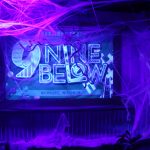Bartok’s thrilling, surreal “Bluebeard”
Milwaukee Symphony, Edo de Waart and singers Michelle DeYoung and John Tomlinson triumph in Bartok's opera; Chihuly glass works dazzle.
If Rod Serling had written an opera for an hour-long Twilight Zone episode, it could have been Bartók’s Bluebeard’s Castle. At Friday evening’s Milwaukee Symphony concert, Bluebeard came complete with a Rod Serling host, in the form of narrator Dominique Serrand. He read — very elegantly — a poetic symbolist prologue in which the “echo of an echo of a sigh” transported us into a 1911 conception of a world in which dark dreams overtake reality.
This opera does not reflect Bartók’s study of Hungarian folk music as much as it does most of his mature music. Bluebeard swims in a broth ranging from Wagner to the Expressionist Schoenberg to Debussy. This is dissonant but tonal music — as Francesco Lecce-Chong pointed out in his helpful pre-concert talk — that vacillates between F# and C. Bartók makes expressive Expressionism; illustrative harmony abounds. He casts the blood on Bluebeard’s castle walls as grating minor seconds and the grandeur of Bluebeard’s kingdom as a stupendous C major triad from the whole orchestra — with a blast from the soprano as the cherry on top.
The plot, based on the old tale of wives who check into the castle but don’t check out, is as dream-like as the dialog between Bluebeard and his new (fourth) wife, Judith. She insists on opening the seven locked doors in his gloomy castle. He resists, then gives in, door after door. Horrors and delights lie behind them: A cache of blood-stained weapons, a hoard of gems, a grand vista of a garden, a pool of tears. Suspense builds to the opening of each door, and a series of doors build to that spectacular C chord as the first climax. A second climax occurs at Door 7 — and the revelation of three prior wives in a bizarre state of suspended animation.
Bedrock support and surging energy from de Waart and the MSO surely helped bass-baritone John Tomlinson and soprano Michelle DeYoung bring out their best. These big, Wagnerian voices sailed over the orchestra. They were not merely loud, they were intense, and both of them are fabulous musicians. They phrased smartly and found the rhythmic impetus and dynamic contours in Bartók’s irregular arioso lines, in which nothing is obvious. (And they had to sing in Hungarian, as if the piece weren’t hard enough.)
Tomlinson possesses one of those rare low voices with a tenor’s ping, and he is absolutely perfect for this difficult role. (I prefer Tomlinson to the more lugubrious Andrea Silvestrelli, who sang the role well in his way with the MSO in 2009.) DeYoung’s gleaming, golden sound was something to behold. They were glorious together, with acute awareness of pitch and balance. They were glorious as actors, too. Their slow-moving, stylized manner fit the aesthetic exactly. They controlled their focus completely — now inward, now burning with passionate eye contact, now bedazzled by the blood and riches behind the doors.
And dazzling they were: Six Dale Chihuly glass sculptures, big works originally made for the Seattle Symphony’s Bluebeard, rotated into view from behind monolithic black wedges as the text indicated the opening of the doors. Ablaze with Noele Stollmack’s lighting and placed on a high platform behind the orchestra, they floated like hallucinations above the heads of the singers.
Bluebeard was a surprise hit for the MSO back in 2009, and it was a hit Friday. The big audience went crazy for this strange opera and, especially, for these remarkable singers.
Matthew Annin, who has impressed in his first year with the MSO as principal horn, went front and center Friday with Mozart’s Horn Concerto No. 2, K. 417, a charming galant trifle. Annin rushed a little, early in the first movement, but then found the groove and fell into synch with de Waart. The warm sound, the buttery legato in the slow movement, the beautiful intonation, the burnished timbre delivered the pleasure and grace of the music.
Bartók wanted us to hear the effort and feel the passion; Mozart sought to conceal the effort and sublimate the passion into artifice. Annin did exactly that throughout, most charmingly in the galloping hunting-horn finale. He maintained a gentleman’s ease even as the music bounded over hedgerows.
This program, given in Marcus Center Uihlein Hall, will be repeated at 8 p.m. Saturday and 2:30 p.m. Sunday, March 16-17. For tickets, call the Marcus Center box office, 414 273-7206.



















I cannot WAIT for tonight’s concert!!
Don’t miss this concert!
Hi Tom, thanks for the great review, as always. Playing this great work with Edo and two such outstanding singers is one of the highlights of my career.
Have to disagree with your intimation that Bluebeard is somehow derivative or immature, though. Yes, it is early, so it has a late-Romantic opulence that his later pieces don’t, but every bar sounds like Bartok to me. The opening, for instance (lugubrious strings of fourths in the celli/bassi) are almost a carbon copy of the opening of the Concerto for Orchestra, a late work. Also the typically Hungarian snap-rhythm (ie short-long) is prominent in several motives.
Which leads to my second point, that Bartok was heavily immersed in Hungarian folk-music by 1911, the year of Bluebeard. Bartok jotted down his first folk melody in 1904, and by 1906 and 1907 was traveling all over Hungary and Romania, recording folk songs on a primitive phonograph. (This according to the Groves Dictionary.)
Sorry to be the contrarian, but that’s what makes internet reviews so much fun, right?
Again, thanks for the review – We very much appreciate your support of the arts in Milwaukee.
Scott Tisdel
MSO cellist
Hi Scott,
You’re quite right about the Bartok’s getting out for folk music field work before this date. For some reason I had remembered Bartok’s birthdate as 1891 when it fact it was 1881. So I had mentally moved his biography by a decade. D’oh. I’ve changed the story to correct that.
But this particular piece doesn’t show that Hungarian influence nearly the way the String Quartets do. The obvious models for “Bluebeard” are Debussy’s “Pelleas et Melisande” and Wagner’s “Tristan und Isolde.” By the way, I am in no way suggesting that “Bluebeard” is derivative. It’s an amazingly inventive piece; but it does swim in that late-Romantic stew that Schoenberg, Debussy and Wagner inhabited. That is to say, it is very much a product of its historical moment.